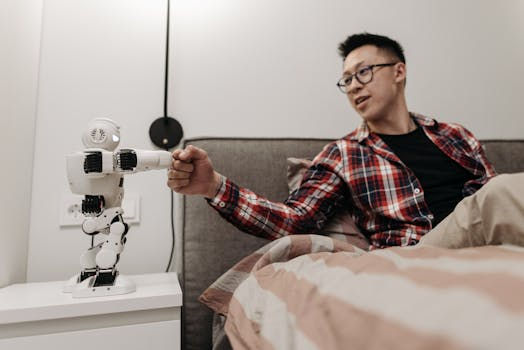How AI Is Making Gadgets More Human-Centric
In today’s fast-paced world, technology has become an integral part of our daily lives. From smartphones to smart homes, we rely on gadgets to make our lives easier and more convenient. However, for a long time, these gadgets have been lacking a crucial element – the human touch. While they may be efficient in performing tasks, they often lack the ability to understand and respond to human emotions. This is where artificial intelligence (AI) comes in, revolutionizing the way we interact with technology and making gadgets more human-centric than ever before.
Understanding Human Emotions
One of the biggest challenges in making gadgets more human-centric is understanding human emotions. AI-powered gadgets are now equipped with the ability to recognize facial expressions and tone of voice, allowing them to understand the emotions of their users. This not only enables them to respond more appropriately but also creates a more personalized and human-like experience.
Enhancing User Experience
The integration of AI in gadgets has significantly enhanced user experience. For instance, virtual assistants like Siri and Alexa can now understand natural language and respond accordingly, making interactions more natural and conversational. This has made gadgets more user-friendly, especially for those who are not tech-savvy or have limited mobility.
Predictive Capabilities
AI-powered gadgets have also become more efficient in predicting human behavior and needs. For example, smart thermostats can now adjust the temperature based on the user’s habits and preferences, eliminating the need for constant manual adjustments. This not only saves time but also makes gadgets more intuitive and human-like in their responses.
Empathy and Personalization
Empathy is a crucial aspect of human relationships, and AI has now made it possible for gadgets to be empathetic towards their users. This is achieved through personalized interactions and responses that are tailored to the user’s emotions and preferences. Whether it’s through personalized recommendations or understanding the user’s mood, AI-powered gadgets can now create a more personalized and empathetic experience for their users.
Assistance for People with Disabilities
The impact of AI in making gadgets more human-centric is immense, especially for people with disabilities. AI-powered assistive technologies have made it possible for people with limited mobility or sensory abilities to use gadgets with ease. From voice-controlled devices to AI-powered prosthetics, technology has become more accessible and inclusive for people with disabilities.
Ethical Considerations
While AI has revolutionized the way we interact with gadgets, it also raises ethical concerns. As machines become more human-like, questions arise about their autonomy and moral responsibility. It is crucial to address these concerns and ensure that AI-powered gadgets are developed and used ethically, keeping in mind the well-being and safety of their users.
The Future of Human-Centric Gadgets
The integration of AI in gadgets has already transformed the way we interact with technology, and it is only going to continue in the future. With advancements in machine learning and natural language processing, AI-powered gadgets will become even more efficient in understanding and responding to human emotions. We can expect to see more empathetic and personalized gadgets in the future, creating a more human-like experience for users.
In conclusion, AI has undoubtedly made gadgets more human-centric, bridging the gap between technology and human emotions. With its ability to understand and respond to human emotions, AI has transformed user experience, especially for people with disabilities. Although AI-powered gadgets raise ethical concerns, it is clear that the future of technology lies in creating a more human-like interface and experience for users.










